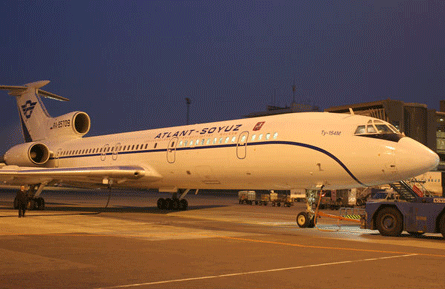Engineers in Russia have equipped an Atlant-Soyuz Tupolev Tu-154M airliner with navigation avionics designed to use the Glonass satellite positioning system, claiming that it marks the first installation of such equipment on domestic commercial aircraft.
It follows Russian president Vladimir Putin's decree on 18 May freeing use of Glonass for social and economic development.
Installation of the multifunctional BMS system, developed by St Petersburg-based institute VNIIRA Navigator, was carried out at Moscow Vnukovo airport's VARZ-400 aircraft repair facility.
Following its equippage the Tu-154 underwent two test flights on 30 July to demonstrate the system. The first test flight lasted 2.5h and the second flight 4h.
Russia has struggled to maintain the Glonass constellation and commercial aircraft have relied on the US-operated GPS navigation system for satellite positioning. GPS capability has become a standard component of commercial avionics.
Moscow-based Atlant-Soyuz says that the installation is the first time in the history of Russian civil aviation that an aircraft has been fitted with systems to navigate using Glonass.
"Introduction of Glonass into the unified air navigation system allows cross-checking of designated routes," says the carrier. "Every 5s the system performs correction of the designated route, which enables compliance with the requirements of air navigation."
It says that the issue of ensuring accurate and economical navigation is crucial given the increase in air traffic and says that modern technology is essential to providing this accuracy.
Putting into operation a Russian passenger aircraft equipped with Glonass avionics, says Atlant-Soyuz, marks one of the first steps by Russia's civil aviation industry towards realisation of the government's plans for the navigation system.
 |
|---|
©AirTeamImages.com |
Source: FlightGlobal.com
















